18 Dog Breeds That Love the Heat
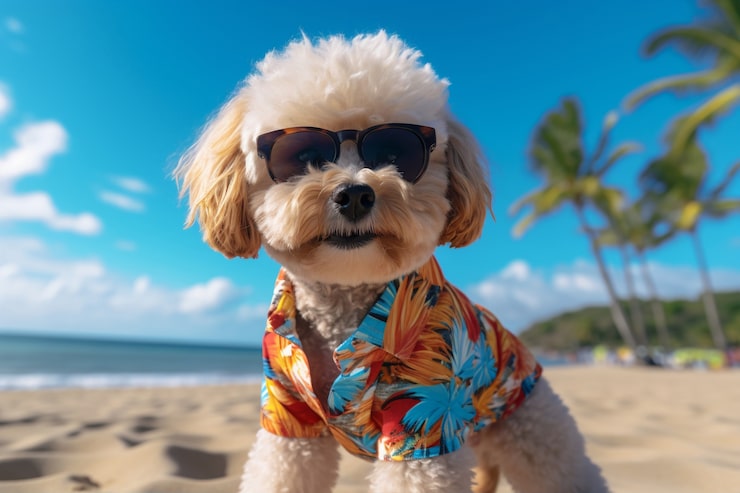
Dogs, much like people, have different preferences when it comes to the weather. While some breeds happily bury themselves in the snow, others prefer to bask in the desert sun. From the scorching sands of Africa to the icy tundra of Siberia, a dog’s coat, body structure, and ancient history reveal exactly where they thrive.
1. Basenji

The Basenji, often called the “barkless dog,” is a breed of ancient lineage, originating in the hot, humid regions of central Africa. This small, elegant hound was historically used by tribal people to hunt in dense jungle under the blazing sun, an environment that sculpted its perfect adaptation to heat. Its defining physical traits, a short, fine coat, lean body, and minimal body fat, all work together to prevent overheating where thicker-coated breeds would quickly suffer. In contrast, they have very low tolerance for cold weather, often shivering and needing multiple layers of protection. They’re independent, cat-like in their cleanliness, and perfectly suited to sunny, dry climates, where they can enjoy long periods of outdoor activity without being encumbered by the warmth.
2. Pharaoh Hound
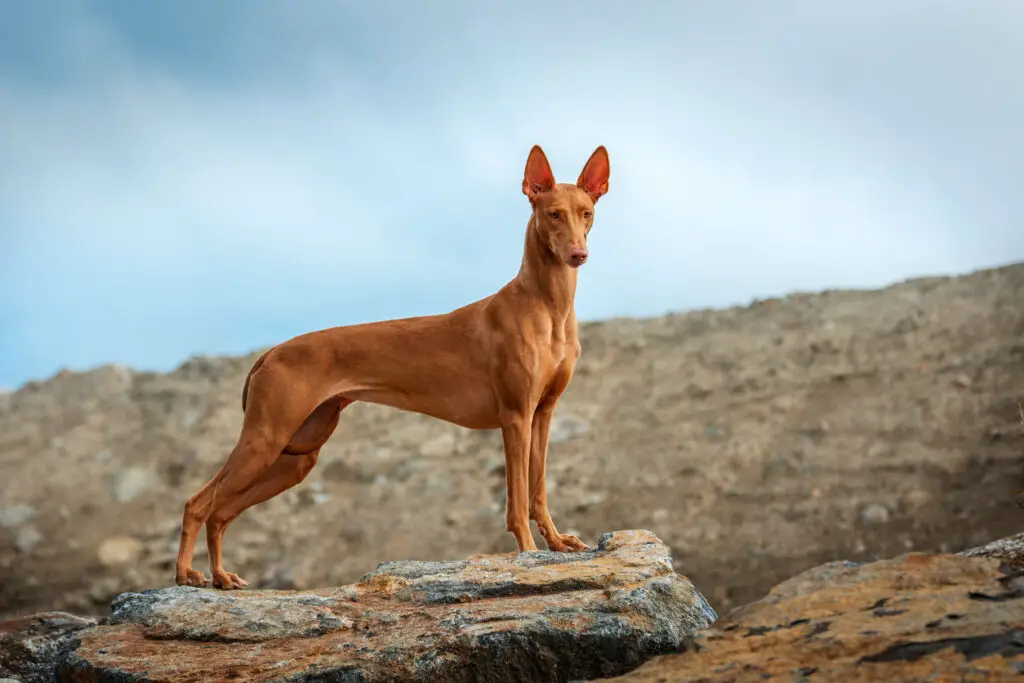
As the national dog of Malta, the Pharaoh Hound’s history is interwoven with the warm, dry climate of the Mediterranean, often drawing comparisons to the dogs depicted in ancient Egyptian art. Bred as swift hunters on the sun-drenched islands, their physical structure is a marvel of heat efficiency: a very short, fine coat that offers no insulation, a sleek, aerodynamic body, and long limbs. This minimal coverage is ideal for rapidly dissipating heat but makes them extremely vulnerable to cold, requiring protective clothing even in mildly chilly weather. They are famous for a charming characteristic called “blushing,” where their nose and inner ears turn a deep rose color when they are happy or excited. This combination of elegance, speed, and heat-tolerance makes them true sun-worshippers.
3. Chihuahua
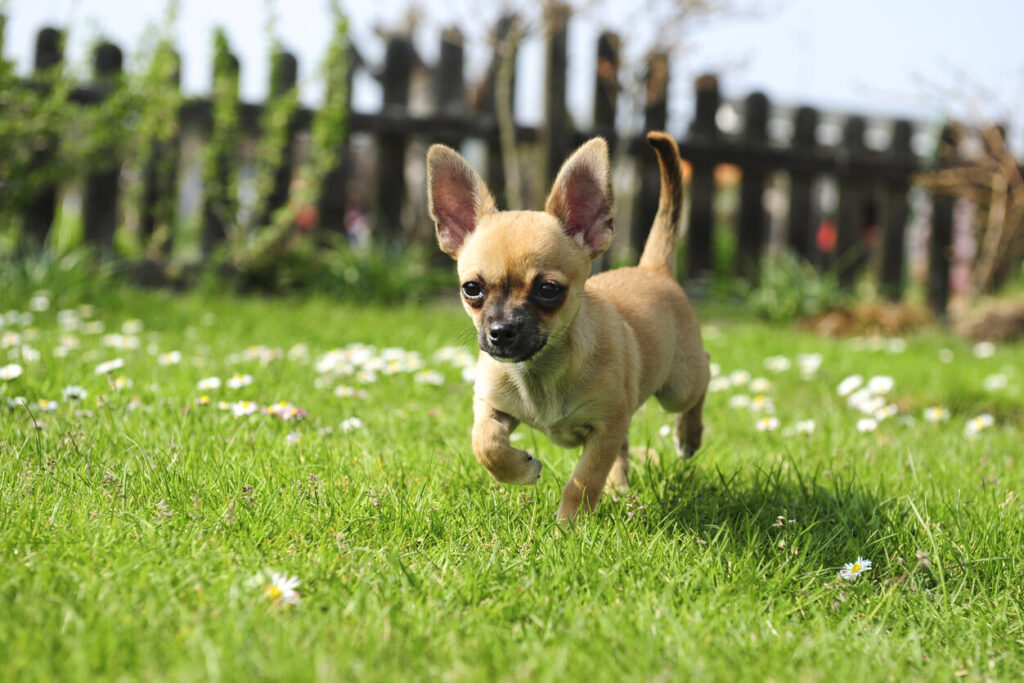
Originating from Mexico, the Chihuahua is arguably one of the most recognizable dogs perfectly adapted to a perpetually warm climate. Their small size and minimal body fat, a necessity for heat tolerance, are distinct disadvantages in the cold, forcing them to rely on sweaters, blankets, or human body heat to regulate their temperature. They genuinely love to sunbathe and will instinctively seek out the warmest spot in any room, whether it’s a sunbeam on the floor or the lap of a person. Despite their tiny stature, they possess a bold, spirited, and loyal personality. Their suitability for hot weather is not a preference but a physiological necessity, rooted deeply in their genetic history from the warm Mexican plateau.
4. Ibizan Hound
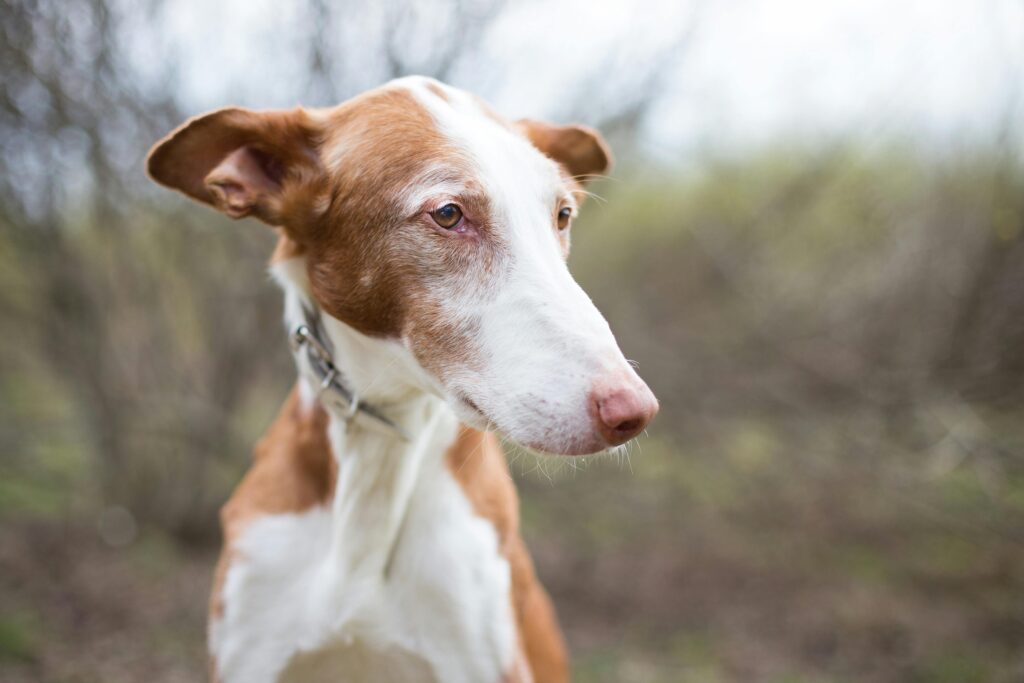
Hailing from the Balearic Islands off the coast of Spain, the Ibizan Hound (or Podenco Ibicenco) was bred to relentlessly hunt rabbits in the high grass under the unforgiving Mediterranean sun. Their tall, slender, and extremely lean physique, coupled with a very short or smooth coat, is a masterful design for enduring hot, dry climates. These dogs are natural sprinters and vertical jumpers, able to clear great heights while remaining cool. Due to their minimal body fat and lack of an undercoat, they are completely unsuited for cold or damp conditions, quickly becoming chilled. Known for their “cat-like” hunting style and affectionate, clownish personality at home, they thrive as graceful, heat-hardy companions in active, sunny households.
5. Dalmatian
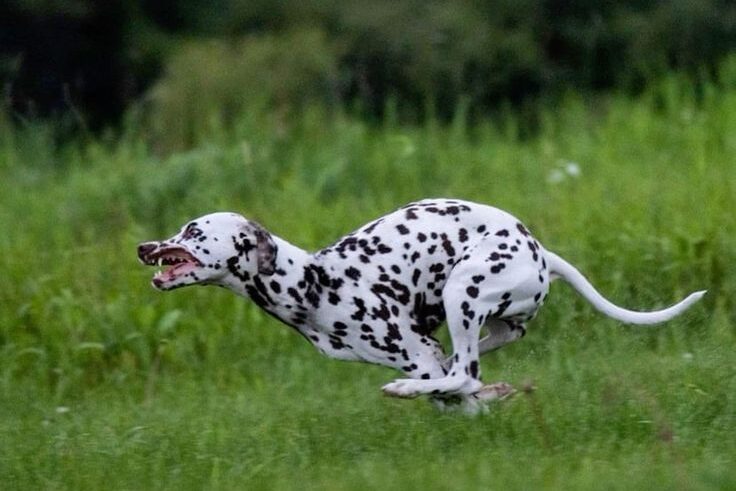
The Dalmatian, famed for its spots, has a historical and physical background that points toward a strong preference for warmer weather. Developed as a coach dog, they accompanied horse-drawn carriages on long journeys across Europe, requiring tremendous endurance, often in sunny conditions. Their sleek, short, and dense coat offers surprisingly little insulation, making them tolerant of heat but very sensitive to cold, where they will quickly shiver. Dalmatians are highly energetic and need significant exercise, an activity best done in moderate to warm weather. They thrive as loyal, playful, and spirited companions, but their comfort level significantly declines in colder regions where their historical role and physical build are less suited.
6. Greyhound

Greyhounds are the ultimate dogs built for speed, and their physical form, low body fat, thin skin, and an extremely short, smooth coat, is a design that prioritizes rapid cooling over insulation. This structure makes them surprisingly well-suited to hot, dry climates, as they can quickly shed excess heat, though they must always have shade and water. Conversely, they are highly susceptible to cold and quickly become chilled, requiring warm coats and blankets indoors and out during winter months. Retired racers, in particular, often enjoy long, lazy stretches in the sun, soaking up the warmth after their daily short bursts of intense running. In warm climates, they are gentle, quiet, and low-maintenance companions.
7. Whippet
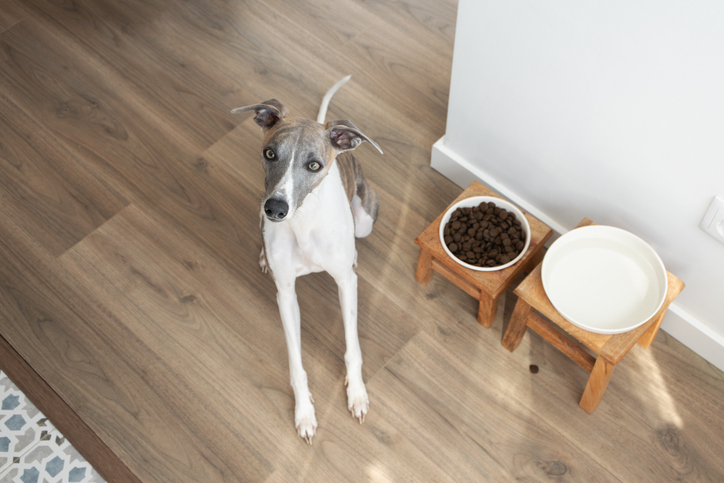
As a smaller relative of the Greyhound, the Whippet shares the same physical blueprint for heat tolerance. Bred for short-distance speed and affectionately nicknamed the “poor man’s racehorse,” they have very thin coats and almost no body fat, making them perfectly capable of tolerating and even enjoying warm weather. They are famous for being “couch potatoes with zoomies,” meaning they split their time between explosive play and long, peaceful naps in the sunniest spot they can find. However, their physical makeup means cold and damp conditions are a misery for them, demanding a wardrobe of cozy sweaters. Their gentle, affectionate nature and love for warmth make them ideal apartment dogs in temperate and hot regions.
8. Afghan Hound

While the Afghan Hound’s long, flowing coat might suggest a cold-weather breed, its origin in Afghanistan’s mountainous deserts dictates otherwise. The coat is actually a functional element of survival: a lightweight, silk-like layer that provides insulation against the intense daytime heat and the dramatic temperature drop at night. Their lean body and powerful, elegant structure help them navigate arid, warm landscapes. They are independent and aloof, carrying themselves with a regal air. Cold, wet, or damp conditions are poorly tolerated, as their extensive coat can become heavy, matted, and lose its insulating properties. They are truly at their most magnificent and comfortable when basking in dry, sunlit conditions, a testament to their desert heritage.
9. Xoloitzcuintli (Mexican Hairless Dog)

The Xoloitzcuintli, or Xolo, is one of the world’s oldest and most unique breeds, with a history dating back over 3,000 years in Mexico. Having little to no fur, they lack the heat-trapping mechanism that plagues many dogs in warm climates, making them a premier heat-loving breed. Historically, they were valued in ancient cultures as companions, watchdogs, and even living “hot water bottles” due to the warmth they radiated. Their lack of a coat means they need to be protected from direct, intense sun exposure with sunscreen, but they absolutely thrive in warm temperatures. Conversely, they are extremely sensitive to cold and must wear clothing to prevent shivering and skin issues. They are loyal, tranquil, and deeply affectionate companions who seek out warmth constantly.
10. Vizsla
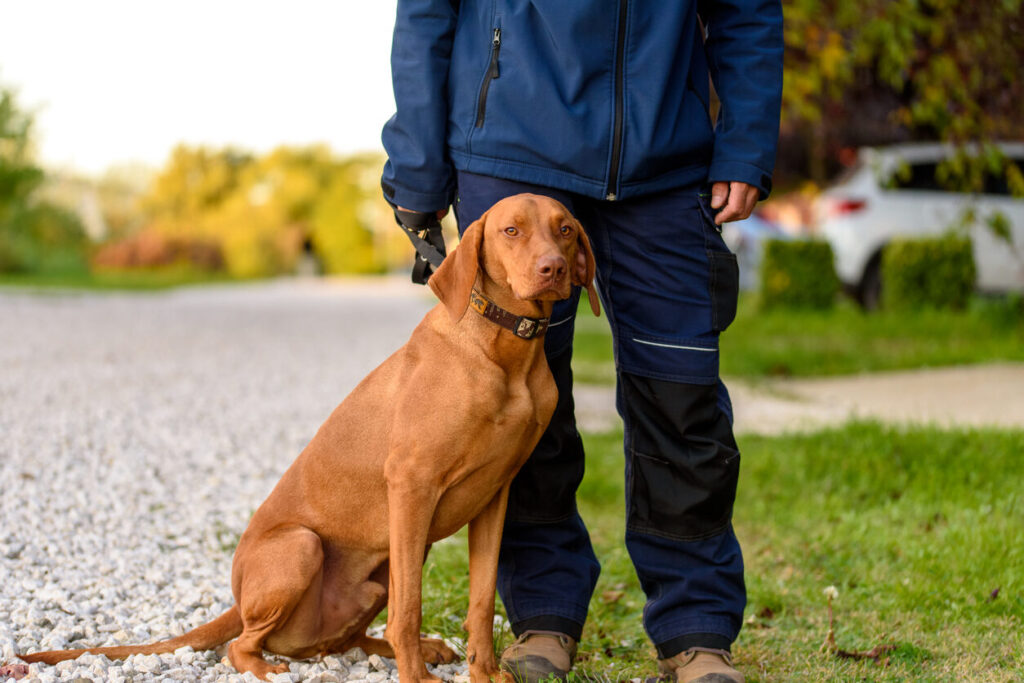
The Vizsla, a hunting dog from Hungary, has a short, dense, rust-colored coat that is designed to minimize bulk and dry quickly, making them highly efficient in warmer temperatures. Their highly energetic and athletic nature requires extensive outdoor exercise, which is far easier and safer in warm climates than in the deep cold. Vizslas are famously known as “Velcro dogs” due to their strong desire to be close to their people, often seeking out human contact for warmth when temperatures drop. While they can handle mild cold, they lack the thick undercoat needed for true winter weather. They are happiest when active outdoors in the sun, reflecting their origins as agile, all-purpose pointers in Central Europe’s moderate-to-hot seasons.
11. Rhodesian Ridgeback
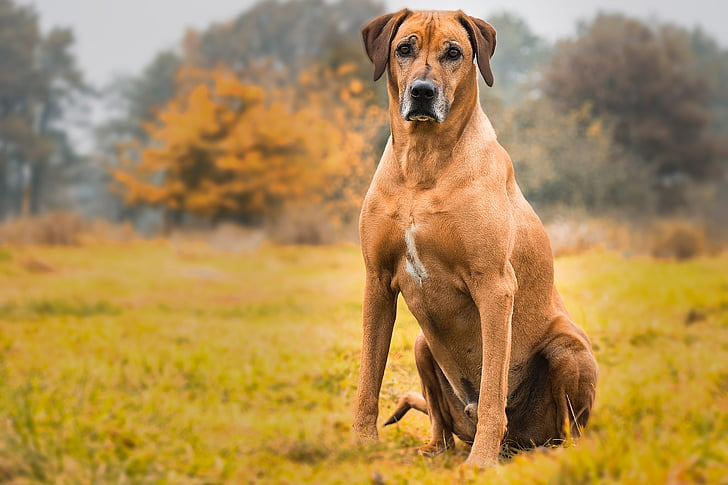
The Rhodesian Ridgeback was developed in Southern Africa, where it was bred to hunt lions and track game over vast distances in hot, arid, and dry conditions. Their physical conformation is a masterclass in heat tolerance: a short, dense, sleek coat that provides minimal insulation, a muscular, lean build, and exceptional stamina. This breed is simply not built for the cold, where they will shiver and quickly become uncomfortable. Independent and protective, they are best suited to active families in warm regions where they can use their energy outdoors. The distinctive ridge of hair along their spine is a unique trait, but their true defining characteristic is their deep-seated resilience and adaptability to the scorching heat of their African homeland.
12. Thai Ridgeback

As a rare, natural breed originating in Thailand, the Thai Ridgeback has been shaped by centuries of thriving in tropical, hot, and often humid conditions. Their extremely short, low-maintenance coat and sleek, muscular body are ideal for dissipating heat rapidly. They are an independent and highly intelligent breed, requiring experienced ownership, but they naturally excel in warm weather environments. Lacking any insulating undercoat, they have a low tolerance for cold and damp climates and will need consistent protection to stay warm. The Thai Ridgeback’s physical appearance, often featuring the same signature ridge as its African counterpart, is a living testament to its origins in a consistently warm climate.
13. American Hairless Terrier
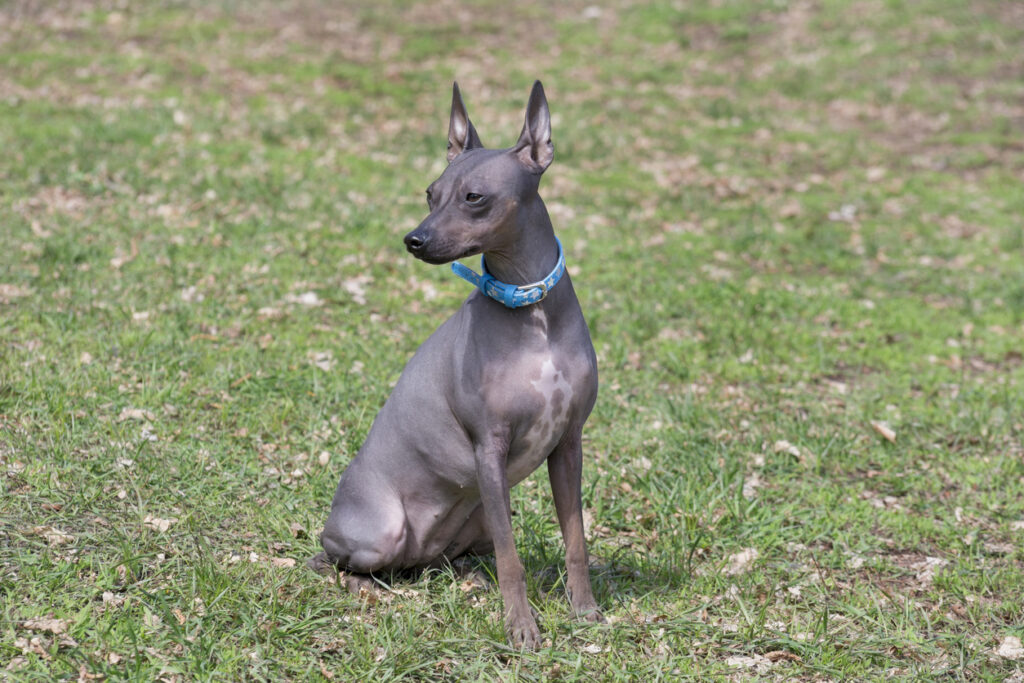
Developed in the United States, the American Hairless Terrier (AHT) is uniquely and completely adapted to warmth because it completely lacks a coat. Without fur to trap heat, these dogs stay refreshingly cool in warm conditions, provided they have access to shade and water. They have become popular companions for people with allergies, but their lack of a coat is a double-edged sword: they must be protected from sunburn and are utterly unsuited for cold weather. An AHT will shiver uncontrollably without layers of clothing and blankets when the temperature drops. Despite their delicate appearance, they are playful, curious, and incredibly affectionate, thriving in the coziness and warmth of sunny, mild regions.
14. Canaan Dog

The Canaan Dog is Israel’s national breed, one of the oldest domesticated dogs, and a true survivor, having been bred and selected by the harsh conditions of the Negev Desert. As a desert guard dog, it possesses a unique double coat: a hard, straight outer coat and a softer undercoat that works to insulate the skin from the intense daytime sun while also providing warmth during the cooler desert nights. This makes them highly effective in arid, hot environments. They are hardy, intelligent, and fiercely loyal, requiring plenty of mental and physical stimulation. While they can manage mild cold better than true sighthounds, they are most comfortable and resilient where sunshine and dry heat dominate, echoing their ancient desert heritage.
15. Saluki

The Saluki, or Arabian Hound, is a breed with roots that stretch back to the deserts of the Middle East, making them one of the oldest known domesticated dogs. Bred for speed and stamina, they chased game like gazelles across blistering sands, a role that demanded their lean, light frame and fine, often feathered, coat. These traits make them exemplary hot-weather dogs, as their bodies are designed for rapid cooling. However, they are highly sensitive to cold, dampness, and humidity, and do not thrive in northern climates. Graceful, reserved, and incredibly affectionate with their families, Salukis embody both desert-born toughness and elegance, and they are happiest when their athletic prowess can be displayed in warm, open spaces.
16. Spanish Greyhound (Galgo Español)

The Galgo Español is a sighthound hailing from Spain, where it was bred for hunting hares on the expansive, open plains that can get very hot. Like its Greyhound and Whippet cousins, the Galgo has a lean body, minimal body fat, and an extremely short, smooth coat. This physical structure makes them highly successful in tolerating the heat of the Spanish plains, allowing them to exert themselves without quickly overheating. However, they are notoriously sensitive to cold and require layers of protection during winter. Galgos are known for being gentle, calm, and affectionate dogs who balance their high prey drive with a quiet, loving presence indoors, making them well-suited for sunny environments where their grace and endurance can be utilized.
17. Carolina Dog
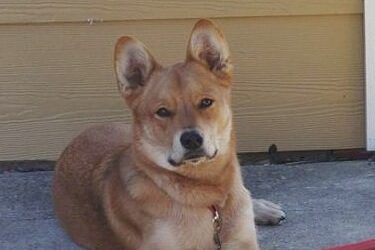
The Carolina Dog, also known as the “American Dingo,” is a breed that evolved naturally and without human interference in the hot, humid, and challenging environment of the Southeastern United States. These dogs are true survivors, possessing a lean, medium build and a short coat that sheds heat effectively and dries quickly in the humidity. Their physical traits reflect a natural adaptation to the region’s long, hot summers, but they struggle in cold temperatures, lacking the necessary insulation. They are highly intelligent, independent, and naturally hardy. The Carolina Dog is a fascinating, living link to the canine history of North America, perfectly adapted to the hot, sometimes unforgiving climates where toughness and resilience are essential for survival.
18. Sloughi

The Sloughi, or Arabian Greyhound, has its origins in the hot, arid deserts and dry plains of North Africa. Bred by the Berber and Bedouin tribes to hunt fast game, its physical characteristics are perfectly honed for a warm climate: a short, smooth coat, an extremely lean, almost delicate, body, and incredible speed. This combination allows for maximum heat dissipation but leaves them highly vulnerable to cold, making them unsuited for colder regions. They are sensitive, reserved, and deeply loyal to their families, thriving in environments that mirror their ancestral homeland. As rare and elegant companions, they are prized for their beauty and their natural, centuries-old adaptation to the heat of the desert.
18 Dog Breeds That Live for the Cold
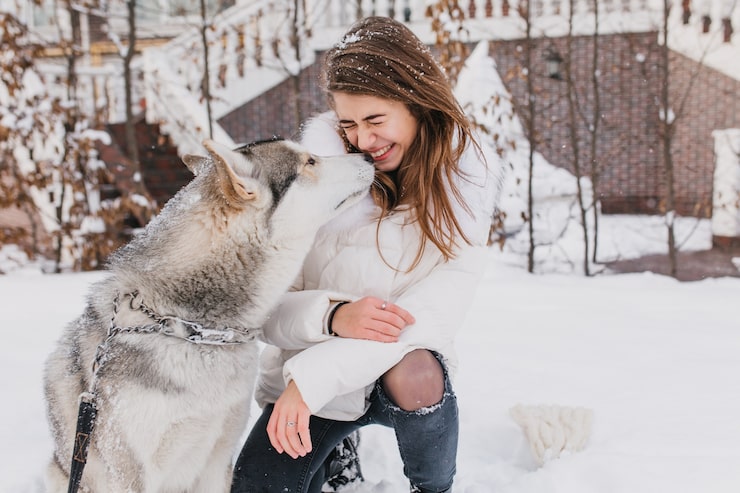
Dogs bred for life in extreme cold are engineering marvels, equipped by nature and human selection with features designed to withstand snow, ice, and sub-zero temperatures. From the Arctic sled dogs built for grueling endurance to the large mountain guardians with insulating double coats, these breeds thrive where others shiver. They often struggle with heat due to their efficient thermal regulation, and their joy is most apparent when they can work or play in the crisp, cooling air of northern climates.
1. Siberian Husky
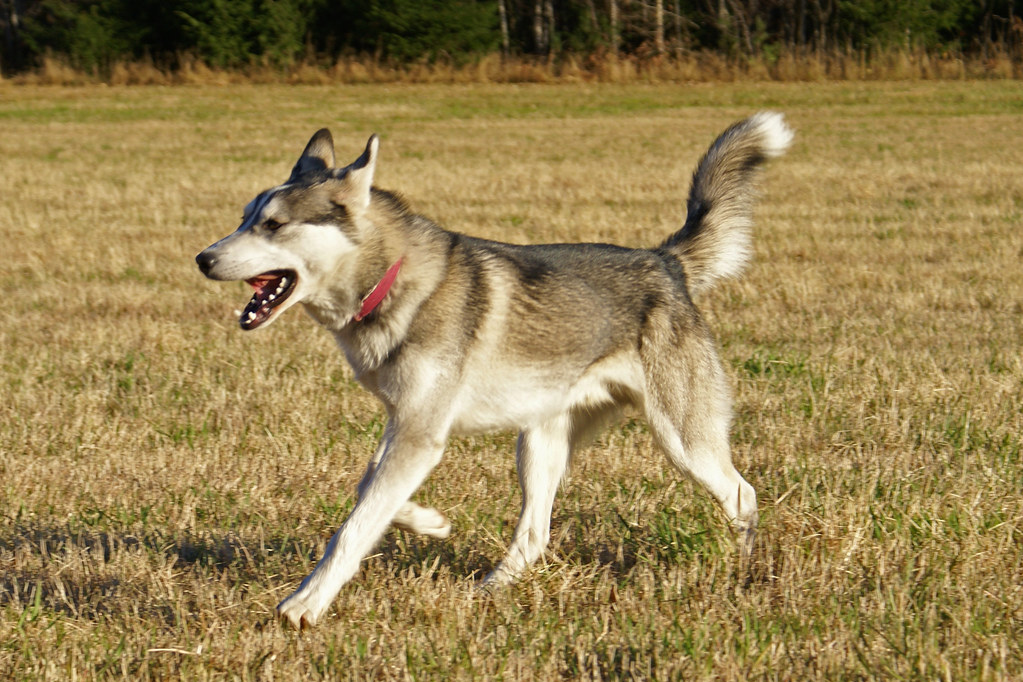
The Siberian Husky is the quintessential cold-weather dog, famously bred by the Chukchi people of Siberia to haul light loads over long distances in sub-zero temperatures. Their defining feature is their incredibly dense, double coat: a short, soft undercoat for insulation and a longer, weather-resistant outer coat. This fur is so efficient that Huskies can sleep comfortably in the open snow, but it makes them highly susceptible to heat exhaustion in warm weather. They have a boundless capacity for running, a friendly and mischievous personality, and are happiest when there’s a fresh blanket of snow to play in, which allows them to fully express their natural working heritage.
2. Alaskan Malamute
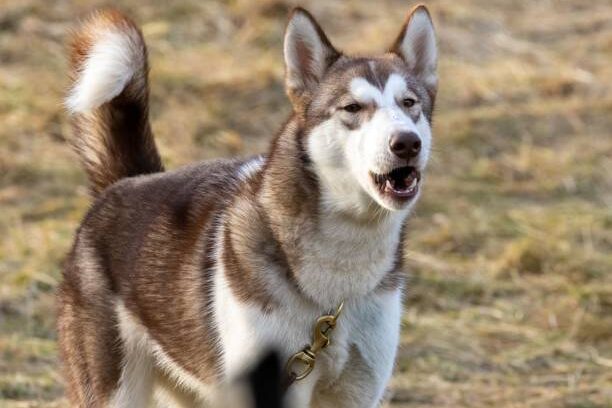
Built for heavy hauling in the Arctic, the Alaskan Malamute is one of the oldest and largest of the Arctic sled dogs. Their massive, powerful build is coupled with a thick, coarse outer coat and an oily, dense wooly undercoat that provides superior insulation against the most extreme cold. Unlike the Husky, they are built for strength and endurance rather than speed. They have a low tolerance for heat, and warm weather can quickly become dangerous for them. Malamutes are known for their affectionate, devoted nature, often acting playful and boisterous, but they are truly in their element when they are pulling a sled or romping in deep snow, completely unfazed by the frost.
3. Samoyed
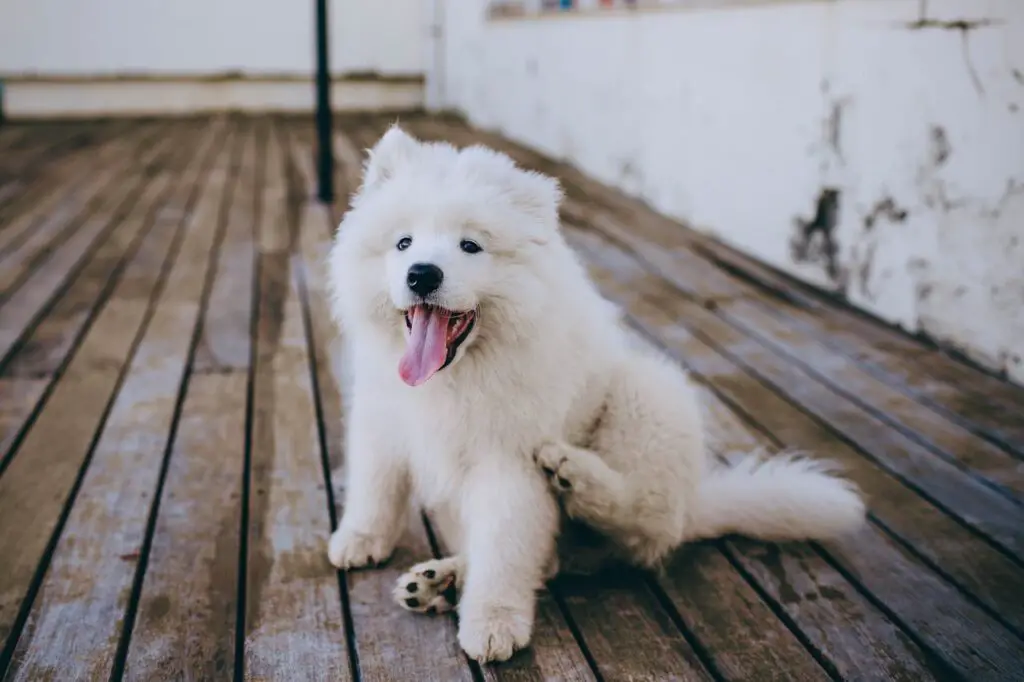
The Samoyed is instantly recognizable by its beautiful, thick, pure-white coat and its famous “Samoyed smile,” a slight upturn of the lips that helps prevent drooling, which could freeze in sub-zero temperatures. This breed originated in Siberia, where they were used for herding reindeer and pulling sleds. Their incredibly dense, double-layer coat is so insulating that it requires constant grooming and makes them highly prone to overheating in warm climates. They are gentle, friendly, and social dogs with a playful disposition. For a Samoyed, a blizzard is a great day for a walk, and they are happiest when they are cool, active, and surrounded by their human pack.
4. Saint Bernard
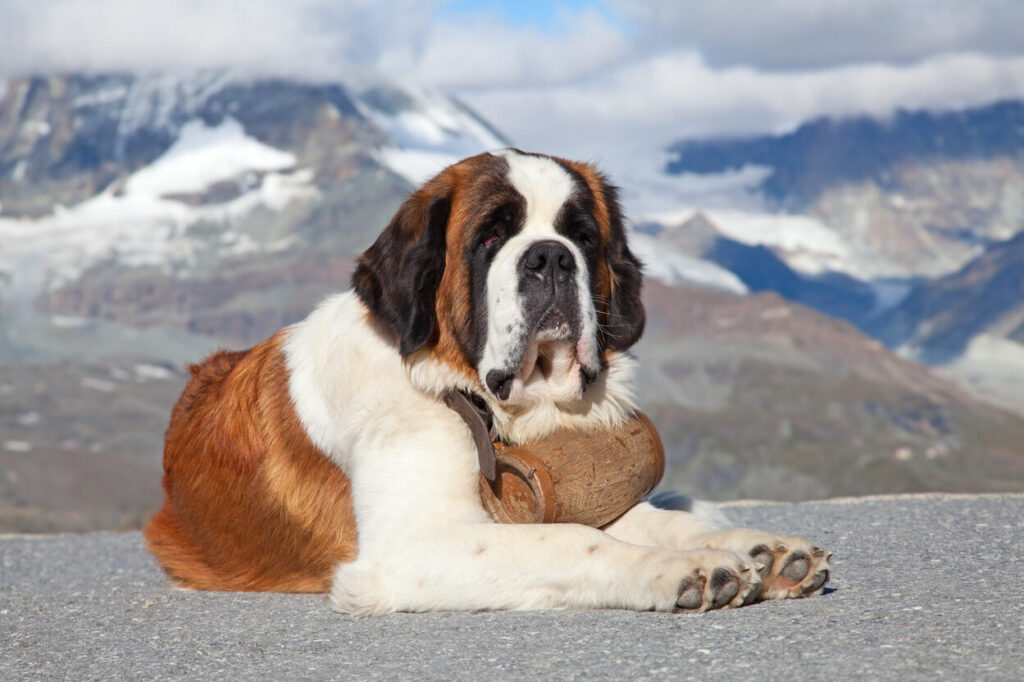
The Saint Bernard’s reputation as a cold-weather hero is well-earned, stemming from their history as rescue dogs in the snowy, treacherous Great St. Bernard Pass in the Swiss Alps. Their massive size and heavy, dense, and slightly rough coat (which comes in both short- and long-haired varieties) are perfect for enduring blizzards and extreme cold. These dogs have an extremely low tolerance for heat, and even mild summer temperatures can cause them distress. Despite their enormous size, they are gentle, patient, and loyal companions. They thrive in mountainous or northern climates where they can enjoy the cool air, which is essential to their comfort and well-being.
5. Newfoundland

Hailing from the cold, rugged coasts of Newfoundland, Canada, this breed was developed to work as a fisherman’s assistant, capable of water rescues and hauling nets in frigid North Atlantic waters. Their huge, heavy coat is famously water-resistant and thick, acting as an insulating layer against both cold air and cold water. This coat makes them poorly suited for warm weather, where they can quickly overheat. Newfoundlands are known for their sweet, gentle, and highly trainable temperament. They adore swimming in cold water and are truly happy only when the weather is cool, a clear reflection of their history of laboring in one of the world’s harshest, coldest maritime environments.
6. Bernese Mountain Dog
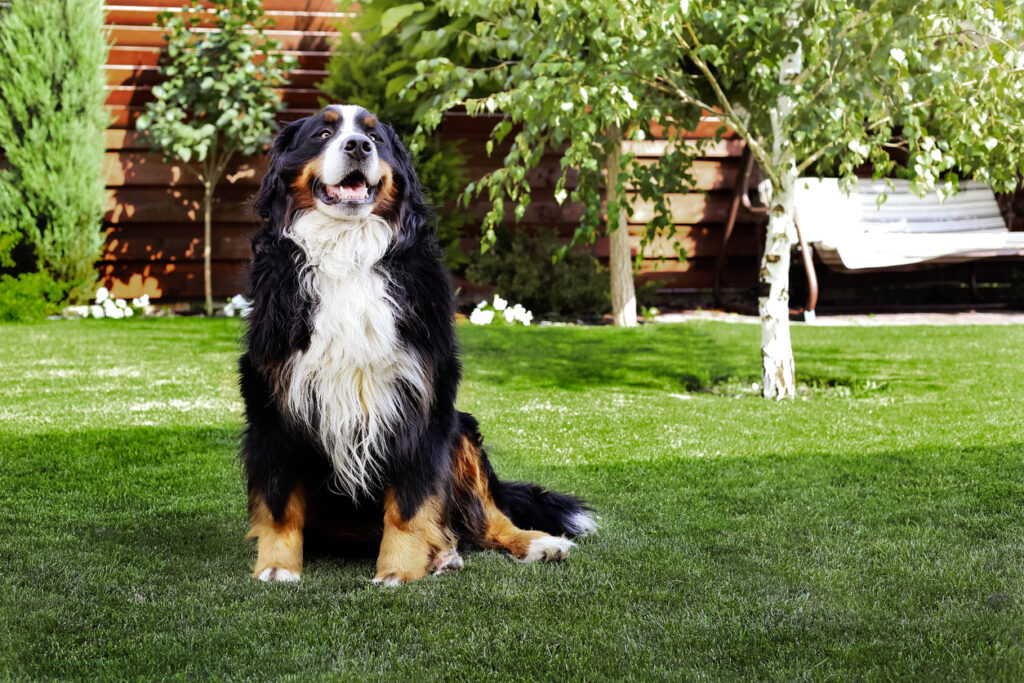
The Bernese Mountain Dog originates from the Swiss Alps, where its large, sturdy build and tri-color, thick double coat enabled it to work as a farm dog, herding livestock and pulling carts in the cold mountain environment. They have a very low tolerance for heat, which can quickly lead to exhaustion, and they are at their happiest when the temperatures drop. Their coat provides excellent insulation, making them completely comfortable in snow and ice. Known for their calm, good-natured, and extremely loyal demeanor, Bernese Mountain Dogs thrive in families that live in cooler climates, where their gentle giant nature and love for the cold can be fully appreciated.
7. Greater Swiss Mountain Dog
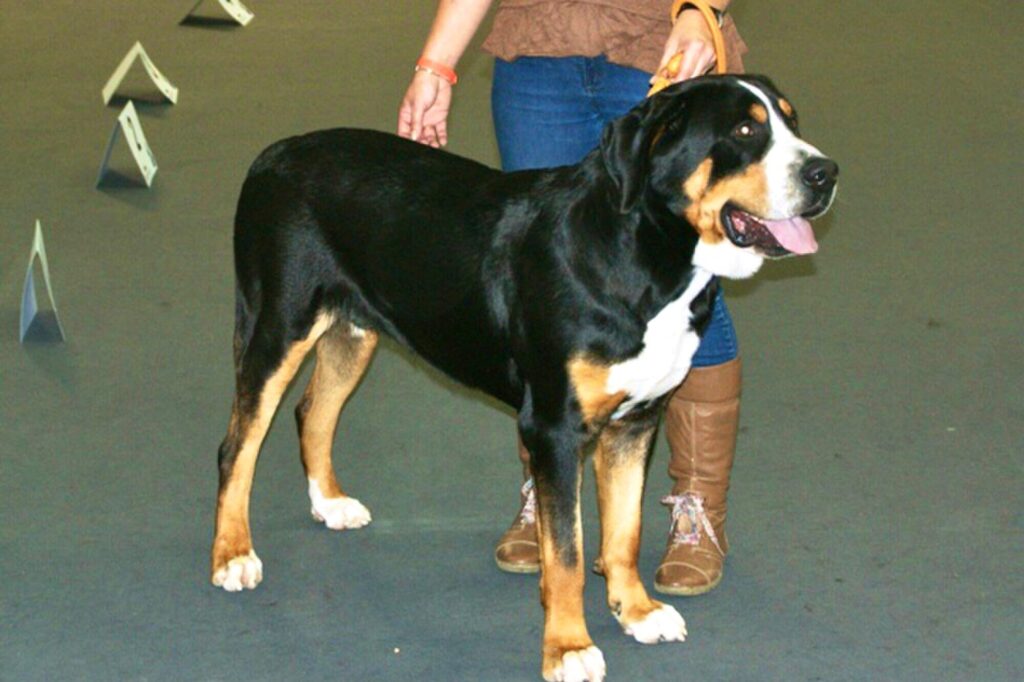
As the larger, shorthaired cousin of the Bernese Mountain Dog, the “Swissie” also hails from the cold Swiss Alps. While their coat is shorter, it is incredibly dense and thick, and they possess a powerful undercoat that offers exceptional insulation against severe cold. Unlike many short-coated breeds, the Greater Swiss Mountain Dog is a cold-weather specialist, though their shorter fur gives them a slightly higher tolerance for moderate heat than the long-haired Bernese. They are strong, muscular, and historically served as drovers and farm dogs. Loyal, faithful, and happiest when they have a job to do in a cool climate, they represent Swiss farming resilience.
8. Keeshond

The Keeshond is a cold-weather spitz-type dog with Dutch origins, historically serving as a watchdog and companion on barges in cool, often damp, European climates. Their defining characteristic is an extremely voluminous, stand-off, thick double coat, a rough outer layer and a soft, dense undercoat, that is designed to withstand harsh cold. This magnificent coat is ill-suited for warm or humid weather, where they are very prone to overheating. They are cheerful, intelligent, and highly affectionate, known as a “Velcro dog” for their desire to be near their owners. A Keeshond is always happiest when the temperature is low enough to fully enjoy the insulating properties of their beautiful coat.
9. Akita
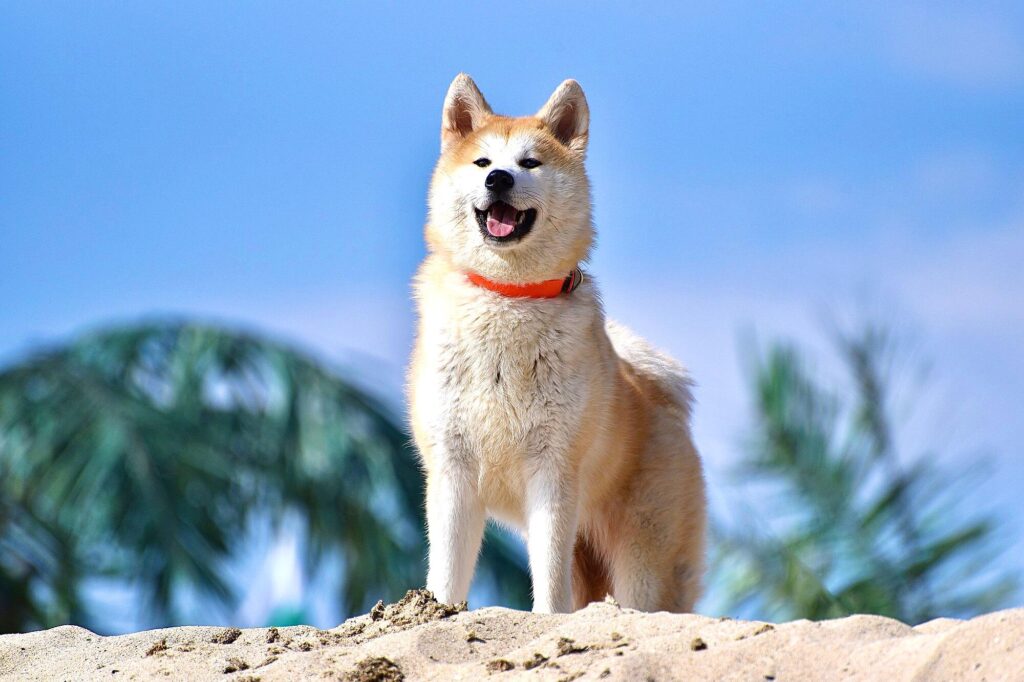
The Akita, a large and powerful breed from the mountainous, snowy regions of northern Japan, is perfectly built for cold weather. Their thick, dense double coat has a deep, plush undercoat, providing remarkable protection against harsh, icy conditions. Like all cold-weather breeds, the Akita struggles significantly in the heat, requiring constant cooling and shade. They are a courageous, deeply loyal, and reserved breed, historically used for hunting boar and bear. Their powerful physique and aloof dignity are best expressed in cool climates, where they can move and rest comfortably without the risk of overheating that is common in warmer regions.
10. Shiba Inu

The smaller, fox-like Shiba Inu is another ancient breed from the mountainous, cold regions of Japan. While the Akita is large, the Shiba is a medium-sized dog with an equally effective defense against the cold: a stiff, short, but incredibly dense double coat that stands off the body. This coat provides a thick layer of insulation, but it makes them highly susceptible to heat exhaustion. Shibas are known for their spirited personality, cat-like agility, and the famous “Shiba scream” when they are displeased. They are active dogs that thrive in cooler climates, where they can enjoy outdoor activities without the risk of overheating.
11. Old English Sheepdog

The Old English Sheepdog (OES) was developed in the cold, wet climate of the English countryside to drive cattle and sheep to market. Their most striking feature is their voluminous, shaggy double coat, which is designed to protect them from both cold and dampness. This heavy, insulating layer makes them poorly adapted to heat and humidity, which can be dangerous for the breed. Known as gentle, playful, and protective family dogs, the OES is happiest when its thick fur can be put to its intended use, protecting it from the cold. They require significant grooming to prevent matting and keep their coat functional, a necessary task to maintain their comfort in cool climates.
12. Great Pyrenees

The Great Pyrenees, or Pyrenean Mountain Dog, was bred to guard flocks of sheep in the frigid, high altitudes of the Pyrenees Mountains between France and Spain. Their massive size and majestic white coat are built for endurance and survival in extreme cold. They possess a thick, double coat, a dense, wooly undercoat and a long, coarse outer coat, that insulates them completely from sub-zero temperatures. Unsurprisingly, they have very little tolerance for heat. They are calm, intelligent, and fiercely devoted guard dogs. The Great Pyrenees thrives in mountainous or northern regions where the cool air allows them to comfortably monitor their territory, a true giant of the cold world.
13. Icelandic Sheepdog
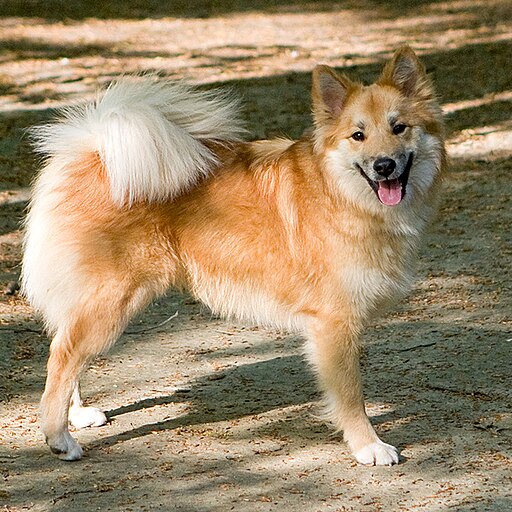
As the name suggests, the Icelandic Sheepdog is the only native dog of Iceland, having been brought to the island by the Vikings. This spitz-type dog is a hardy, medium-sized breed that developed to withstand the often harsh, cold, and unpredictable weather of the Nordic island. They have a thick double coat that provides excellent insulation and protects them from cold winds and dampness. They are a highly energetic, cheerful, and friendly breed, historically used for herding and guarding livestock. Their gentle nature and love for the outdoors make them perfect companions in cool climates, where their endurance allows them to play for hours.
14. Kuvasz
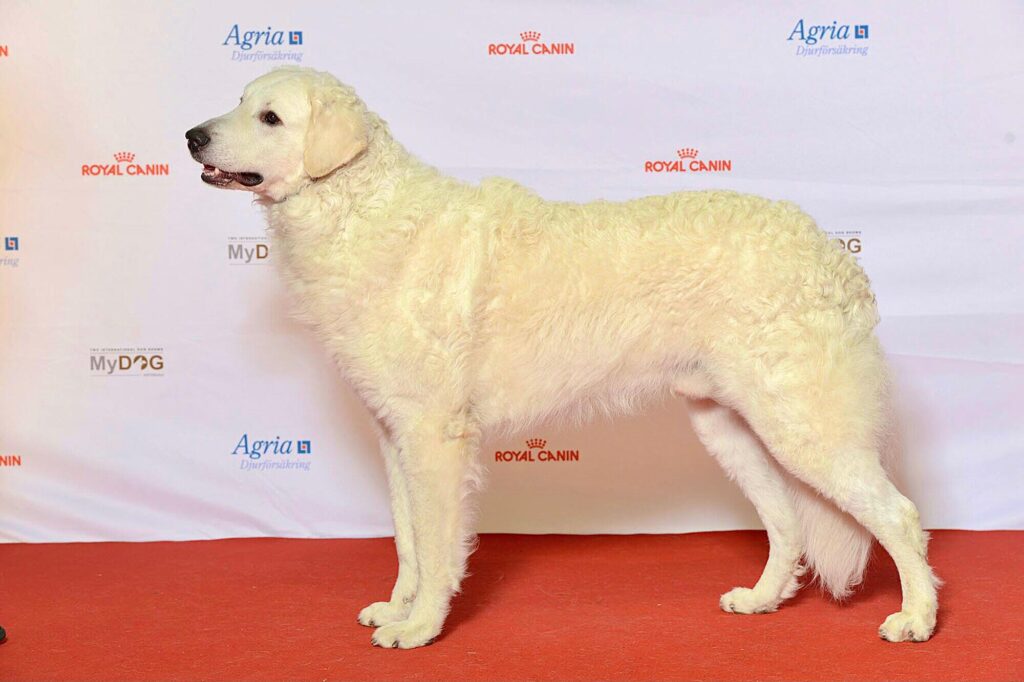
The Kuvasz is an ancient Hungarian livestock guardian dog, historically used to protect flocks in the cold, often snowy mountainous regions of the country. This large, powerful dog has a dense, pure-white double coat that is heavily textured. This coat protects it from both extreme cold and predator bites, but it makes them very susceptible to overheating in warm weather. Known for their courage, intelligence, and deep loyalty, the Kuvasz is a serious working dog that thrives when the temperatures are low. Their thick coat is a necessity for their working history and makes them happiest in cool, northern climates.
15. Tibetan Mastiff
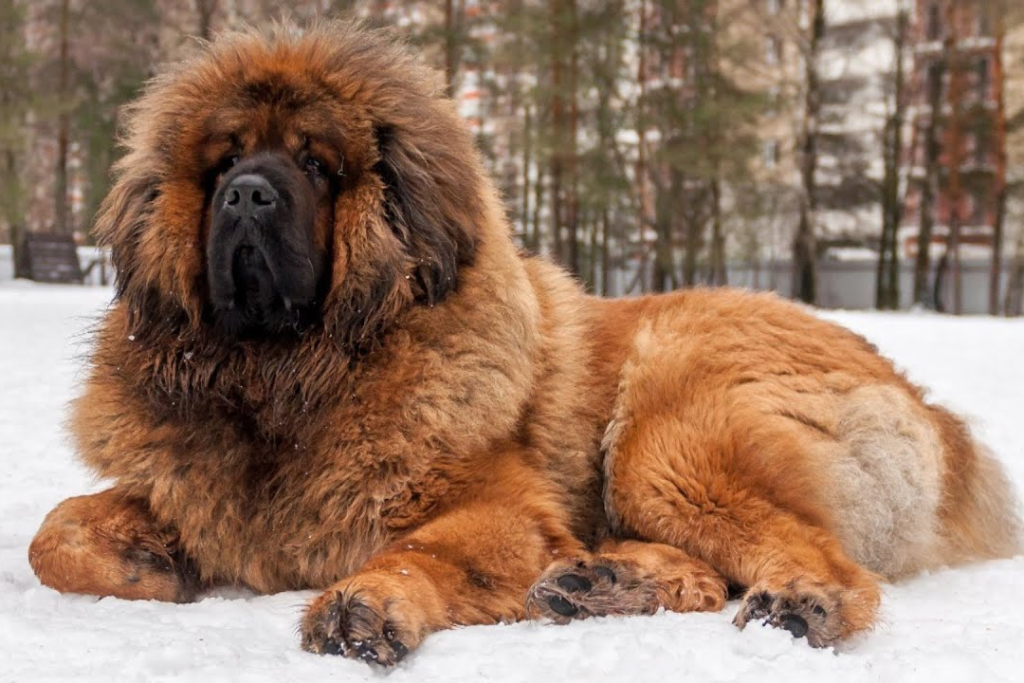
Hailing from the high-altitude Himalayan regions of Tibet, the Tibetan Mastiff is one of the world’s most impressive guard dogs, built to withstand a brutal, sub-zero climate. They possess one of the thickest coats of any breed: a dense, heavy, and extremely well-insulated double coat that features a thick mane around the neck and shoulders. They are completely intolerant of heat and must be kept cool, but they are completely comfortable sleeping outdoors in the snow. Reserved, intelligent, and highly protective, the Tibetan Mastiff is a formidable companion that is unequivocally designed for the deep cold of high mountains.
16. Pyrenean Shepherd (Smooth-Faced and Rough-Faced)

The Pyrenean Shepherd, a smaller, highly energetic herding dog, comes from the same mountain range as the Great Pyrenees. While smaller, their coat, which comes in both long and medium rough varieties, is thick, woolly, and perfectly insulating against the cold, damp climate of the high Pyrenees. They are extremely active and driven, requiring a great deal of exercise, which they can comfortably do in cool weather. Like many herding dogs, they are highly intelligent and alert but do not do well in excessive heat due to their thick coats. They are happiest when working or running in a cool, open, and demanding environment.
17. Leonberger

The Leonberger is a large, majestic breed that originated in the town of Leonberg, Germany, where it was bred to resemble a lion. They possess a luxurious, thick, water-resistant double coat that is incredibly insulating against the cold and snow of central Europe. This heavy coat means they have a very low tolerance for heat and require a cool environment to be comfortable. Leonbergers are known for their gentle, friendly, and calm nature, making them excellent family pets. Their massive size and need for cool air make them ideal for homes in northern or mountainous regions where they can enjoy the climate they were designed for.
18. Chow Chow

The Chow Chow, an ancient breed originating in northern China, is easily identified by its signature “lion’s mane” of dense, rough outer hair and a thick, wooly undercoat. This voluminous coat was a necessity for surviving the cold, harsh winters of its ancestral home and provides unparalleled insulation. They are highly susceptible to heat exhaustion and must be kept in cool, air-conditioned environments during warm months. Known for their dignified, often aloof, and quiet demeanor, the Chow Chow is a dog of unique character. Their thick coat is their key to thriving, making them one of the most dedicated lovers of cool weather.
Whether you live for snowy adventures or prefer to bask in the warmth, there’s a historically and physically adapted companion waiting to share your weather preferences.
This story 18 Dog Breeds That Love the Heat and 18 That Live for the Cold was first published on Daily FETCH


